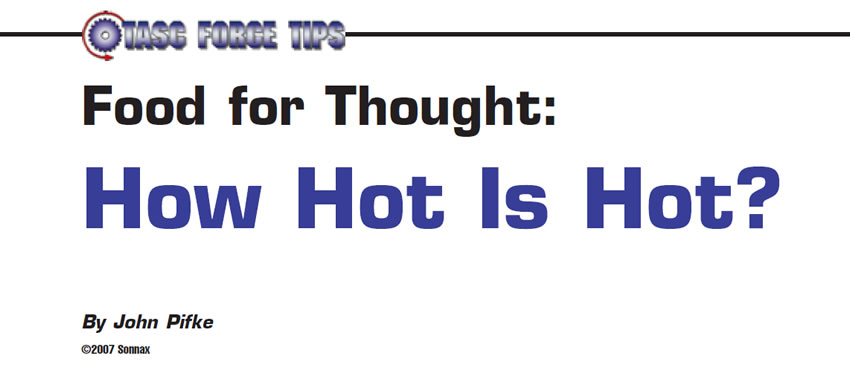Which Generation of Torque Converter?
Since the release of the Allison 1000/2000/2400 series transmission, four basic torque-converter configurations have been used. TC-210, TC-211, TC-221 and TC-222 can be found in Group 21 of the Allison Parts Book, and these four converters all have different stall torque ratios and “K” factors. Over the years several revisions have been made to the torque-converter assembly process for all four converters, and each time a change was made, a new part number was assigned. None of these changes had an effect on the performance or functionality of the torque converter. Different generations of each of the four converters are completely interchangeable with other generations of the same type.
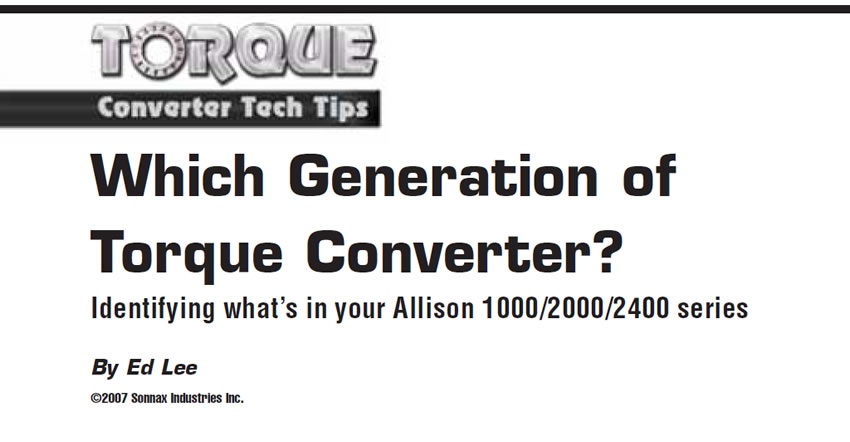
AOS: Absolutely Outrageous Service
So what does impress customers? Things they have never seen an automotive shop do. Things that are so far from normal they will be remembered and talked about at gatherings for years to come. Like, “Let me tell you what happened when I went to get my car fixed. I just couldn’t believe it.”

Double Trouble
Electronic failure can be very similar to a mechanical failure in that when one thing goes wrong, it can cause another part to fail. If you are not careful, you could make a repair that doesn’t fix the original cause of the failure, leading to a repeat failure after repairs.
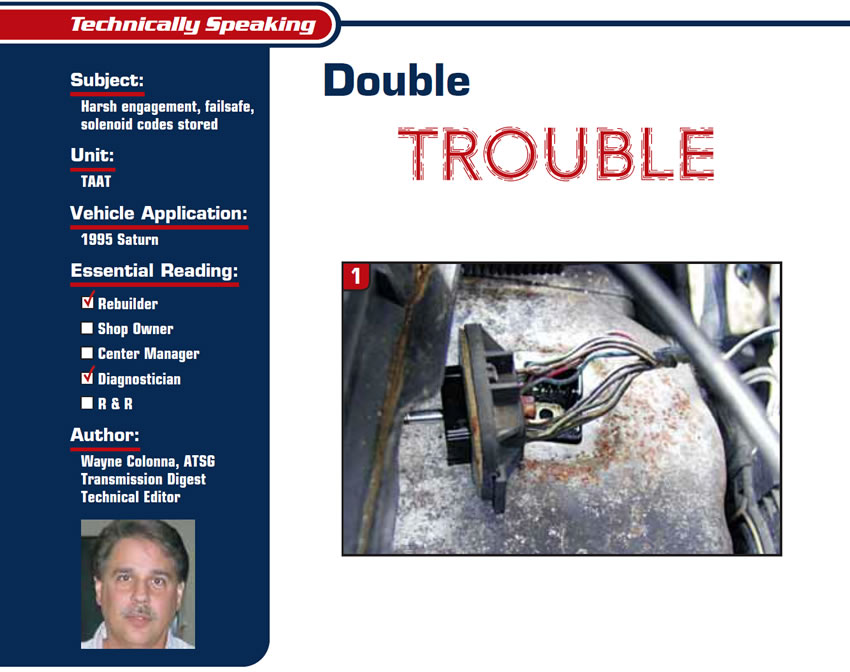
Priority Customers
In business, as in life, the 80-20 rules always seem to apply – things like how 80% of your aggravation comes from 20% of your employees and 80% of your profits come from about 20% of your customers. Now, I don’t know how aggravating your employees really are (the little dears), but I do know the part about the customers to be true. Although you may have lots of them, the ones who spend the most money with the fewest hassles and consistently help you to pay your bills are only about 20% of the total. If you’ve ever muttered the words, “Gee, if only I had more customers like her,” then you know what I mean.

October 2007 Issue
Issue Summary:
At the beginning of the 2005 model year, an electronically controlled actuator replaced the throttle-valve cable on Dodge trucks with the 5.9-liter diesel and 48RE transmission.
After overhaul, an Aisin Seiki 450-43LE exhibits deteriorating shift quality and slips badly in reverse after the truck is driven a mile or two.
During the 2005 model year, Ford redesigned the low/reverse-clutch retaining snap ring for both diesel and gas applications.
2000-and-up Ford vehicles equipped with the AX4S, AX4N or 4F50N may be difficult to fill with fluid.
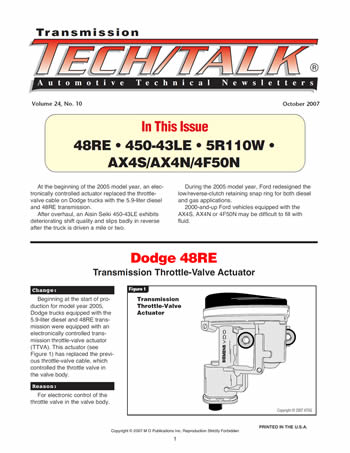
Torque-Converter Forensics
When a torque converter fails, the results are quite often catastrophic. It may be difficult to determine which component failed first and even more difficult to determine the root cause of the failure. Each failure should be viewed as an opportunity to learn, and a failure that is caught before the catastrophic stage should be viewed as a golden opportunity.
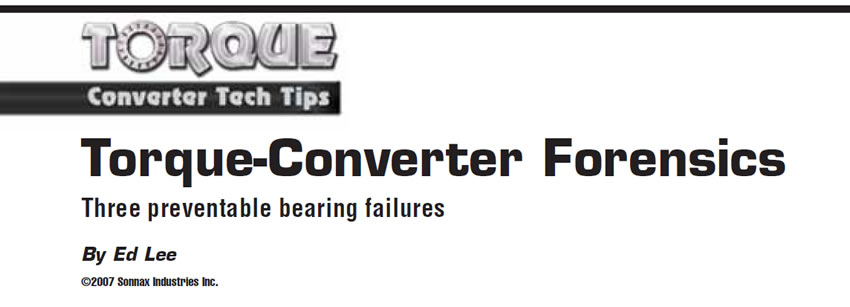
What a Drag
The ATSG tech line frequently receives calls related to engine stall or even a partial-stalling condition that could be easily mistaken for an engine-performance problem in 1995 and later Audi/VW vehicles with the 01M transmission.
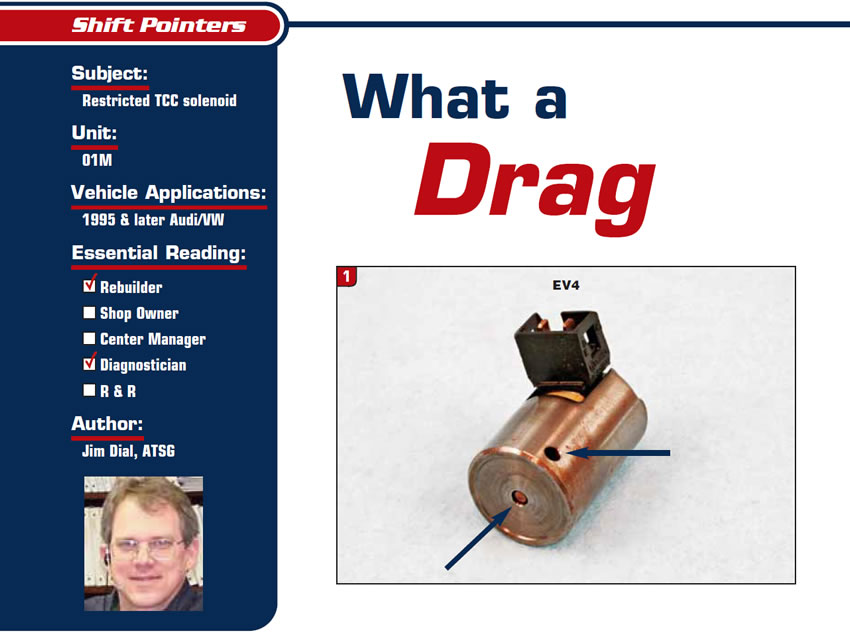
Advanced Manual-Transmission Diagnostics
In last month’s article we started this series on manual-transmission diagnostics. We continue here with a more-advanced discussion. We covered the absolute need for all technicians to understand the theory of operations and power flow of the units they are working on so they can successfully diagnose problems. The topic addressed in this month’s article is shift problems, their causes and fixes. The next chapter will deal with diagnosing noises, and we will close the series with advanced electronic and function diagnosis of electronic and active transfer cases.
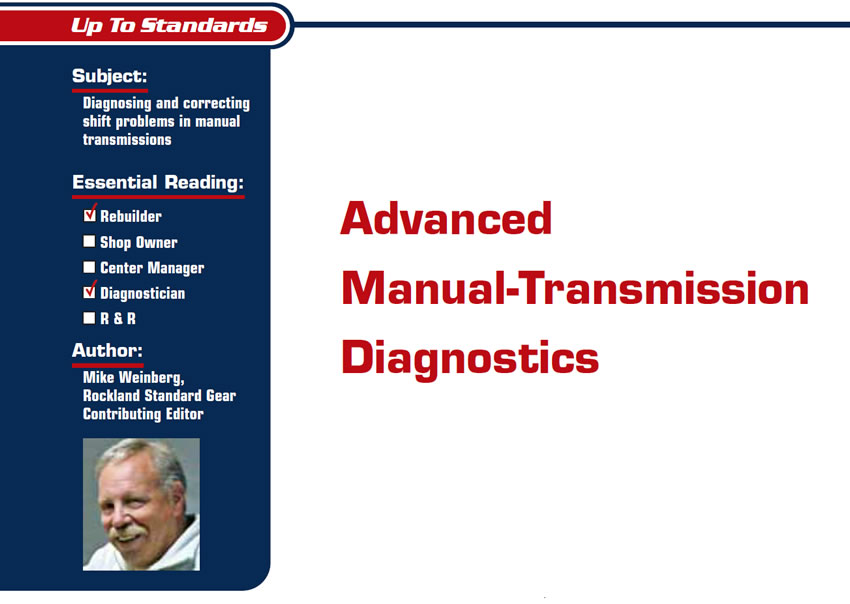
Manual-Transmission Theory: Back to Basics
On automatic transmissions, engine-related computer problems can affect transmission operation. Computer-controlled vehicles have very complex electronic circuits and multiple computers, all of which need to work together. That being the case, we will start with the basics of rear-wheel-drive manual-transmission function and proceed to more-complex diagnostic issues with transfer cases and front-wheel-drive manual transmissions in the next series of articles. Transmission designs may vary in size, shape and appearance, but all the units function in the same manner.
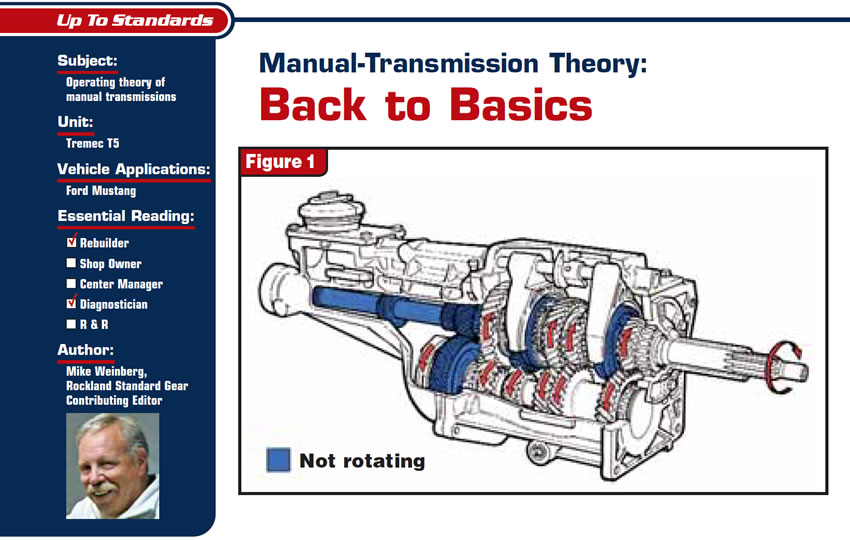
September 2007 Issue
Issue Summary:
A 1995 or earlier Isuzu, Chevy or GMC truck with the JR403E may have no engine-braking assist from the exhaust-brake system and also may have an intermittent no-crank condition and/or difficulty starting.
A Honda vehicle may come into the shop with code P1298 in addition to one or more solenoid codes stored.
On a 2003-04 Honda Accord, 2002-04 Element or 2002-04 CR-V with automatic transmission, the manual shift lever cannot be moved from the park position after replacement of the throttle body.
After replacement of the EPC solenoid in a Ford 4R70W/4R70/75E, the transmission slips or chatters at times. A line-pressure check reveals erratic line pressure.
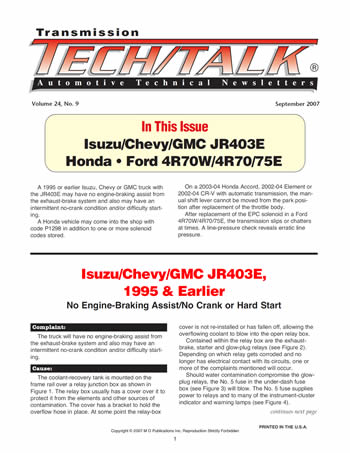
Volkswagen’s Direct-Shift Gearbox Part 5
The DSG valve body is definitely one of the simplest we have seen in transmissions (see figures 1 through 5). It contains only five valve line-ups, two checkballs, three damper assemblies, two pressure senders (pressure sensors/transducers) and 13 filters (see figures 2, 3 and 5).
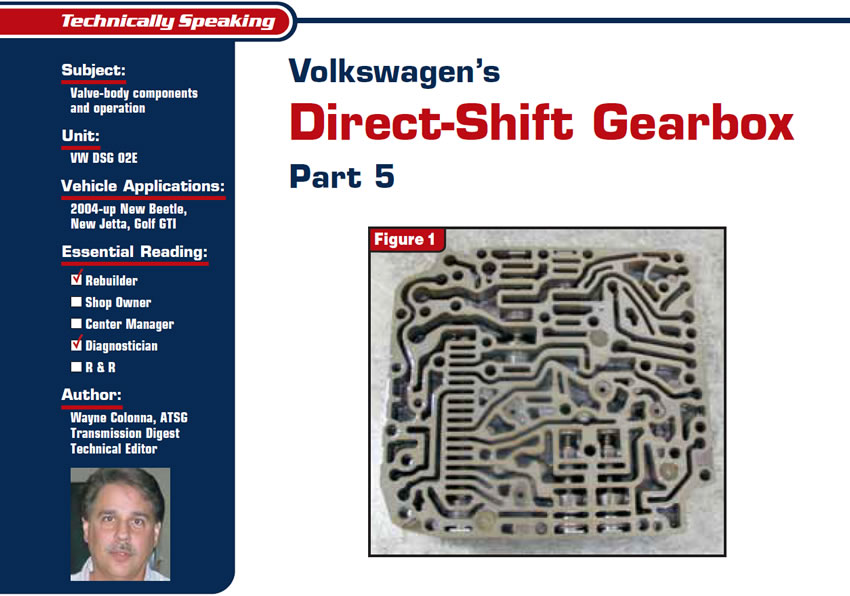
Food for Thought: How Hot Is Hot?
How long have you been in the transmission business? Have you ever honestly sat down and thought about how an automatic transmission heats up? I mean, how hot does it get and how fast does it get there? Does the temperature stabilize as it does in an engine, or is it always changing? Have you ever taken a car for a nice long drive to be sure you “got it hot” and not been able to reproduce the problem? I’m sure you always figured that stop-and-go city driving creates more heat than driving on the highway, but how much more?
